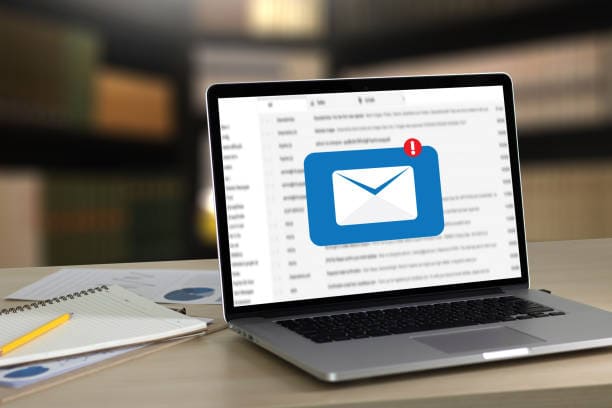In today’s fast-paced business landscape, the success of an organization is intricately tied to how…

Writing a good job description is essential to attract the candidates
What is Job Description?
A job description is a tool that explains the tasks, duties, function and responsibilities of a position. It explains who performs a specific type of work, how that work is to be completed and the frequency. Also, the purpose of the work as it relates to the organization’s mission and goals. A job description gives an employee a clear and concise resource to be used as a guide for job performance. Similarly, a supervisor can use a job description as a measuring tool to ensure that the employee is meeting job expectations.
How to write a Job Description?
Writing a good job description is essential to attract the most qualified candidates for a company. The key to writing effective job descriptions is to find the perfect balance between providing enough detail so candidates understand the role and the company’s objective(s), while keeping the description concise.
Commonly, a job description contains the following components- job title, job purpose, job duties and responsibilities, required qualifications, preferred qualifications and working conditions.
Job Title – The Job Title is a brief description of the job which reflects the content, purpose and scope of the job. Examples include, Manager, Assistant Manager, Executive, Director, Coordinator, Administrator, Controller, Officer, Supervisor, etc.
Job Purpose – The Job Purpose provides the overview of the role, level and scope of responsibility consisting of four-five sentences providing a basic understanding of the role. A concise summary of the job position.
Job Duties and Responsibilities- This section contains a description of the duties and responsibilities assigned to the job. This part describes the fundamental nature of the job which reside in a large proportion of the employee’s time. Here includes –
- Explanatory phrases which tell why, how, where, or how often the tasks and duties are performed.
- Focus on the outcome of tasks.
- Reference areas of decision-making, where one will influence or impact.
- Identify areas of direct or indirect accountabilities.
- Describe the level and type of budgetary or financial responsibilities.
- Describe the nature of contact, the people contacted, and the extent to which the incumbent will interact with others within and outside of the company.
Apart from the above, also includes –
- List job duties that reflect the position requirements and ensure they are not based upon the capabilities of any one individual.
- Provide direction to other individuals.
- Supervises, hires, trains, provides work direction and problem-solving assistance for other employees.
- Supervises staff, including hiring, scheduling, and assigning work, reviewing performance, and recommends salary increases, promotions, transfers, demotions, or terminations.
- Manages others through subordinate supervisors.
Hence,
The job duties should be listed in accordance with their importance and/or frequency in which they are performed. They are typically presented in a bulleted or numbered format, consisting of separate duties
Required Qualifications & Experience –This section lists the required level of job knowledge (such as education, experience, knowledge, skills and abilities) required to do the job. This section focuses on the minimum level of qualifications for an individual to be productive and successful in this role.
Working Conditions – Identify the working conditions and physical demands that relate directly to the essential job duties and responsibilities to be compliant considering –
- Environment, such as an office or outdoors.
- Exposures encountered, such as hazardous materials, loud noise, or extreme heat/cold.
- Essential physical requirements, such as climbing, standing, stooping or typing.
- Indicate if required to work weekends, nights, or be on-call as a regular part of the job.
- Travel requirements.
- Emergency staff designations, etc.
Why an effective Job Description is important?
- JD stretches a clear picture to the candidates about what their duties and responsibilities are for that particular job.
- A Job profile provides a reliable understanding across various departments of job position roles and how they help the organization to bloom.
- It helps employees to create specific goals and missions for job advancement.
- It also helps create restrictions regarding employees’ roles and responsibilities.
- A proper employee Job Description justifies an employee’s pay structure also.
- A well drafted JD can be used to set measurable performance goals based on roles and responsibilities in the job description and then instruct the employees to meet those goals required.
- Organizations can use their employees’ job descriptions, along with the descriptions of viable job promotions, as a source of incentives for employees to pursue classes, seminars and other career development activities.
Besides,
- Job descriptions can be helpful in evolving a standardized compensation program with minimums and maximums for each position.
- Employers can use the JD as a principle for performance and as a tool to encourage employee performance, and also to reach above and beyond the job profile in respect to receive recognition and rewards.
- If required, organizations can use the job descriptions to exaggerate that an employee is not adequately performing the job functions.
- JD’s can help identify specific skills and abilities that are essential for a position or the environmental pressures that apply to the position. A well drafted employee job description tells the candidate the requisites of the job. After reading the JD, some candidates might decide that they are not fit for the position or may not be interested in it.
Suggestions for Writing Job Descriptions –
Job descriptions should be prepared in a manner that all components are accurately stated to create a clear understanding of the role. Here are some indications to assist in the process-
- Write in a concise
- Always use the simple word rather than the complicated & keeping sentence structure as simple as possible. It will enhance understanding.
- Avoid abbreviations and acronyms, since reading the position description may not be familiar with them.
- Don’t use ambiguous terms. Use terms such as assists, handles and performs describe i.e. how the position assists, handles or performs. Using the word by and then detailing the processes, tasks or operations performed will usually clarify the ambiguity.
- Focus on essential activities and occasional tasks.
- Avoid references to other employee’s names, instead, refer to the job title or department, etc.




This Post Has 0 Comments